How To Develop A Strategic HRM Plan In 2025 [Free Templates]
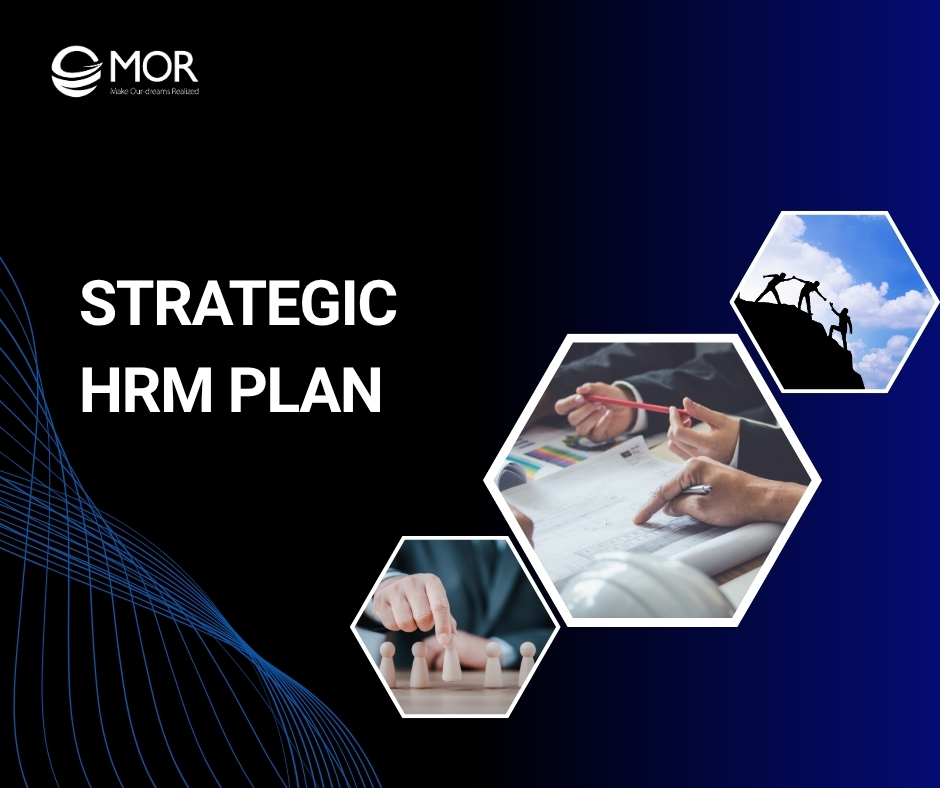
Writing a strategic HRM plan without a clear structure often leads to confusion, wasted time, and misaligned goals. Many HR teams struggle to turn strategy into real results. This MOR Software’s guide will walk you through each step to build a solid, actionable strategic HRM plan template that supports business growth and team alignment in 2025.
What Is A Strategic HRM Plan?
A strategic HRM plan turns your broader HR strategy into a clear, practical playbook for execution. It’s a living document that simplifies the vision, making sure everyone, leaders, teams, stakeholders, knows what’s going on and what role they play.
The plan breaks down HRM models, goals, and core actions tied to business needs. It helps HR stay focused on outcomes that matter and makes it easier to adjust as your company changes. You don’t just list ideas, you map out what HR will actually do, and when.
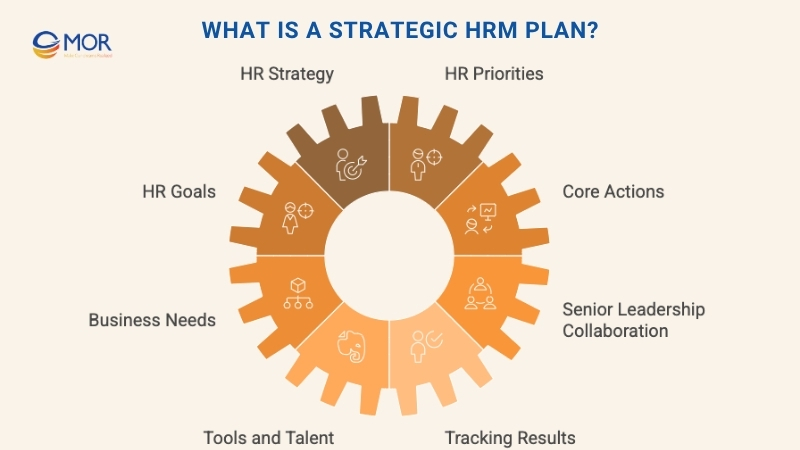
Usually, HR teams build this with senior leadership. Together, they lay out how the plan of human resource management supports company operations, what tools and talent are needed, and how to track results. Solid HR plans and HRM strategic plans keep everyone moving in the same direction.
Key Benefits Of Strategic HRM Plan For Your Business
A strategic HRM plan gives structure to your HR strategy. Instead of leaving it as a broad vision, this plan turns it into something actionable, guiding daily work, clarifying responsibilities, and helping leaders and HR teams stay aligned.
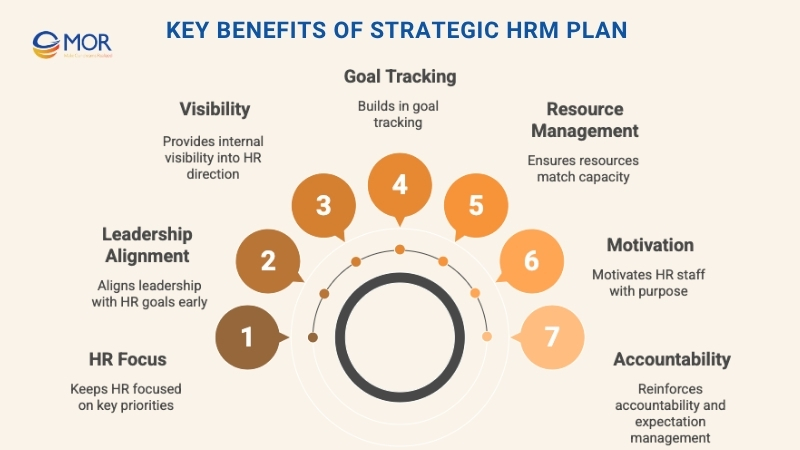
It helps everyone move in the same direction. Leadership understands what HR is driving toward. The HR team knows what matters most. Progress can be tracked, refined, and adapted when business conditions shift. With this in place, HR becomes more proactive and accountable.
A strategic HRM plan brings these advantages to the table:
- Keeps HR focused on what matters most
- Aligns leadership with HR goals from the start
- Gives internal teams a clear look at HR’s direction and priorities
- Makes goal tracking part of the process
- Matches resources to capacity early on
- Helps HR staff stay motivated with a clear sense of purpose
- Sets the tone for accountability and better expectation management
>>> READ MORE: HR Risk Management: 9 Types Of Risks & Ways To Reduce
What Should A Strategic HRM Plan Include?
Every strong strategic HRM plan needs to explain where HR is headed, how it supports the business, and what actions will make it happen. This isn't just a checklist, it’s a clear guide that connects HR strategy with day-to-day execution. It also gives everyone, from executives to team leads, the same playbook to follow.
Start with the bigger picture. What’s HR’s ambition? What values and goals are driving the company forward? The plan should show how HR contributes to those goals, not in theory, but in practice. That means outlining measurable outcomes, projects, and investments with clear timelines and responsibilities.
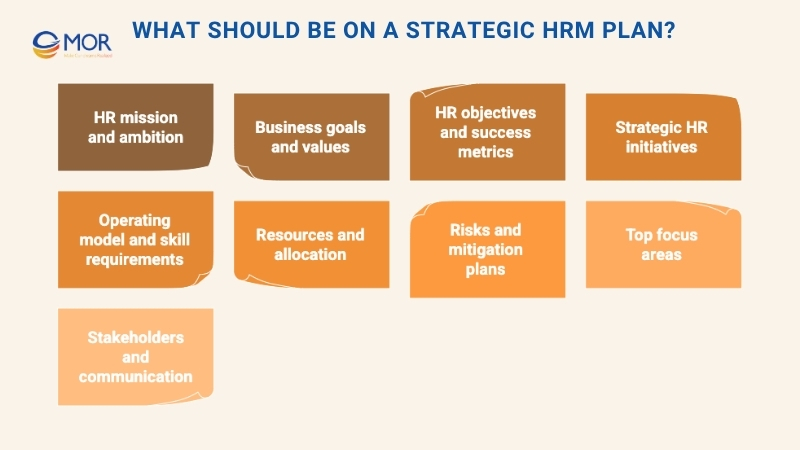
Below is what an effective strategic human resource planning should cover:
- HR mission and ambition: Begin with a short, direct statement of HR’s purpose. What is HR trying to accomplish, and how will it get there? This helps define priorities and align work with the company's direction.
- Business goals and values: HR efforts should support what the company stands for. Include official business goals and values so HR can tie its work directly to company outcomes. This anchors your plan to leadership’s expectations.
- HR objectives and success metrics: Use data to show what success looks like. Whether it’s through HR OKRs, KPIs, or internal programming languages benchmark, measurable goals let you track what’s working and shift when needed.
- Strategic HR initiatives: Break down the most important activities across key areas, recruiting, compensation, learning, performance, employee experience, and organizational culture. These are the hands-on actions that drive real progress.
- Operating model and skill requirements: Explain how HR is structured. Are you using a business partner model? Agile pods? Centralized teams? Then identify the roles and skills needed to support that structure.
- Resources and allocation: Budget, technology, and people. List what’s needed and how those resources will be managed. This helps avoid overloading teams or overspending mid-cycle.
- Risks and mitigation plans: Identify the biggest threats to your plan, like talent shortages or shifting business demands, and show how you’ll respond.
- Top focus areas: Choose key priorities and explain why they matter. This keeps HR grounded in work that makes a difference and avoids spreading the team too thin.
- Stakeholders and communication: Identify who needs to be involved and how you’ll keep them informed. Tailor updates and messaging to match each group’s needs.
A clear, focused strategic HRM plan template makes this easier to build, update, and communicate. Use it to keep your team aligned and moving forward.
How To Build A Strategic HRM Plan In 7 Steps?
To build a strong strategic HRM plan, you need more than just good ideas. You need a clear path from vision to execution, something that connects your HR strategy to real action. The plan should reflect where your business is going and the workforce challenges you’re likely to face.
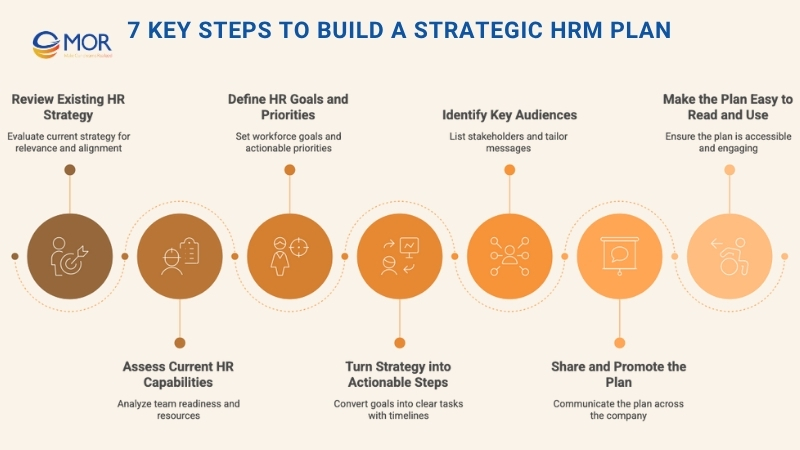
We’ve broken it down into seven clear steps. Let’s start with the first one.
Review Your Existing HR Strategy
Before you begin building your strategic HRM plan, go back and take a hard look at the strategy it’s based on. According to HR expert Dr. Marna van der Merwe, the quality of the plan depends directly on the quality of your strategy. If your current HR strategy is vague or outdated, your plan will fall apart in execution.
Make sure your strategy reflects the business goals, current operating reality, and workforce needs. This alignment sets the tone for everything that follows in your plan, from goal setting to execution.
Once you’re confident your strategy is solid, you can start turning it into a real action roadmap. This is where you define clear initiatives, timelines, and results tracking. Your strategic HRM plan will help align leadership, focus the HR team, and keep progress measurable.
Not sure where to begin? A good place to start is with an HR strategy audit. A structured checklist lets you spot weaknesses, adjust your approach, and make sure you’re building your plan on a solid base. It’s one of the most useful tools when starting your HRM strategic planning process.
Look At Your Current HR Capabilities
After setting your strategy, the next step in building a strategic HRM plan is checking whether your HR team is actually ready to execute it. That means reviewing your current systems, skills, tools, and internal processes to see if they match what the plan requires.
Dr. Dieter Veldsman, Chief HR Scientist at AIHR, puts it plainly: “Many HR teams skip this part. They don’t check if they have the right capabilities, then wonder why execution falls short.” When this step is missed, HR risks burning through resources on plans it can’t deliver.
Avoid that by running a full review of your team’s strengths, weak spots, and upcoming needs. Don’t just look inside the department, consider external factors like market conditions or hiring trends that could affect execution.
A good starting point is a SWOT analysis for HR. It helps you organize what’s working, where you’re vulnerable, and what threats or advantages are coming your way. Pair this with a detailed HR audit, which examines your policies, workflows, and compliance processes. Together, these tools give you a clear picture of what’s in place and what needs to change.
This step sets the stage for building a strategic HRM plan example that’s grounded in reality, not guesswork.
Define HR Goals And Priorities
Now that you've reviewed your strategy and capabilities, it’s time to map out what your strategic HRM plan is actually going to achieve. Start by listing the major goals. What workforce outcomes do you need to hit to support the business?
Next, break those down into clear, actionable priorities. What programs, policies, or partnerships will help you get there? Keep the descriptions short, direct, and tied to results, these will become the core of your finalized plan.
Here’s an example:
Goal: Close talent gaps and build workforce capacity to match future business needs.
- Launch partnerships with tech schools to source qualified graduates
- Offer flexible learning paths to help employees upskill into more advanced roles
- Review and revise pay structures to stay competitive in target hiring markets
This step brings clarity to your strategic HRM plan. You’re not just talking about high-level direction, you’re committing to real actions.
Turn Strategy Into Actionable Steps
Once your strategic HRM plan is laid out, it’s time to get practical. Break each objective into a set of clear, manageable tasks. These should be big enough to move the needle but small enough to track and complete.
For every task, assign ownership to the right teams or individuals. Then add timelines, milestones, and deadlines. This turns your high-level plan into a working schedule that people can actually follow.
With this structure in place, your HR team stays focused and energized. Everyone knows what they’re doing, when it’s due, and how it ties back to the bigger picture. These action plans also make it easier to hold teams accountable, stay on schedule, and measure real progress.
This is the part of the strategic HRM plan that drives execution. No guesswork, just clear steps forward.
Identify Key Audiences For Your Strategic HRM Plan
Your strategic HRM plan won’t work in a vacuum. Different groups across the company will either shape the plan, rely on it, or help carry it out. That’s why it’s important to know exactly who your audience is, and what they need from the plan.
Start by listing out key stakeholders. These often include:
- Business leaders
- C-suite executives
- HR directors and managers
- The broader HR department
- Employees across the organization
Each group plays a different role. Some bring input, like aligning with business goals. Others support execution or drive adoption. When writing your plan, consider what each group needs to see and how it should be presented. Getting their buy-in early makes implementation smoother and more effective.
A strong strategic HRM plan connects with its audience. If they understand it, they’re more likely to support it, and help bring it to life.
>>> Let's dive in 10 Best HRMS Software Solutions All Startups Should Try in 2025 MOR Software brings to you!
Share And Promote The Plan Internally
If your strategic HRM plan is going to make an impact, everyone needs to know what’s in it, and why it matters. That starts with strong communication, from leadership down to every team member.
Begin with a clear presentation to the executive team. Walk them through how the plan supports company goals, what it aims to solve, and what success will look like. Their support will set the tone across the business.
Then, roll it out to the wider organization. Don’t rely on one message or one format. Use a mix of communication channels, team meetings, email updates, internal newsletters, and workplace platforms, to keep people informed and engaged. Be consistent. A steady rhythm of updates helps reinforce the message.
HR staff, in particular, should see exactly how their work connects to the plan. Make it easy for them to understand what’s changing, why it matters, and how they contribute. That clarity drives buy-in and keeps everyone aligned.
If the plan involves policy shifts or new practices, give people time to prepare. Announce changes early. Explain the benefits. Offer support. People are more open to change when they feel prepared, included, and supported.
Clear, steady communication keeps your strategic HRM plan moving, and helps turn strategy into everyday progress.
Make The Strategic HRM Plan Easy To Read And Use
A strategic HRM plan won’t do much if no one wants to read it. If it’s long, full of jargon, or hard to follow, people will tune out. The goal is clarity, something that looks clean, reads fast, and sticks.
Start with a smart layout. Keep it simple but sharp. Even if your plan includes a lot of data, it shouldn’t feel overwhelming. According to HR expert Marna van der Merwe, one of the best tools is a “strategy-on-a-page.” This condenses the most important points into a format that’s easy to understand at a glance.
Use plain language throughout. Keep your writing short, direct, and friendly. Skip academic terms and overused HR phrases. The more natural it sounds, the more likely people are to pay attention. If you need to include company-specific terms or acronyms, just make sure they’re familiar, or give a short explanation in parentheses.
When you’re presenting numbers or projections, show them visually. Use charts, graphs, and infographics to turn raw data into something meaningful. People understand visuals faster, and they’ll remember them longer.
Your strategic HRM plan should invite people in, not push them away. A readable format makes adoption easier across every part of the business.
Real-World Strategic HRM Plan Examples
Looking at real organizations can help bring your strategic HRM plan to life. Below are two practical examples showing how different teams have structured their plans, defined their goals, and communicated their strategy clearly.
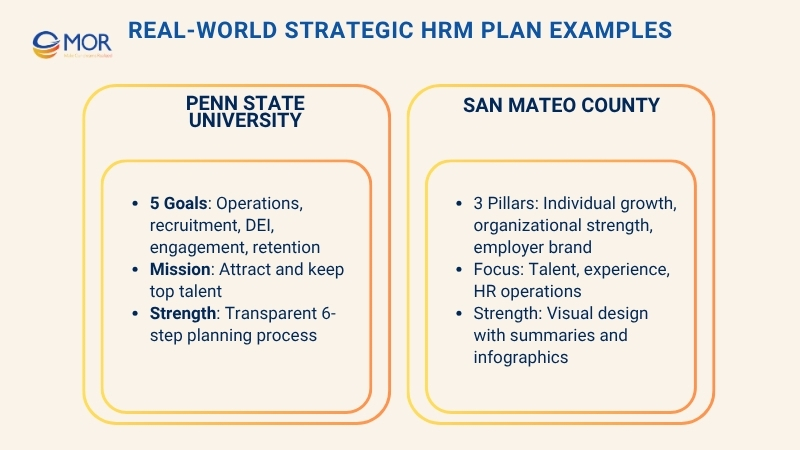
Case Study: Penn State University
Pennsylvania State University’s HR team built its strategic HRM plan around five key goals. These included strengthening internal operations, improving recruitment, driving diversity and inclusion, and building programs to engage, develop, reward, and retain staff.
The plan also reinforces their HR mission: to create innovative solutions that attract and keep a diverse, high-performing workforce.
What makes this plan stand out is its transparency. It includes a “Planning Process” section that outlines who contributed to the strategy and the six phases it took to get the plan finalized and launched.
Case Study: San Mateo County
The County of San Mateo in California developed a five-year strategic HRM plan that focuses on three main pillars: maximizing individual potential, building organizational strength, and positioning the County as a top employer.
Each area includes clear priorities, like talent management, employee experience, and operational excellence in HR. The plan includes both detailed descriptions and summary tables, making the content easy to digest.
To improve engagement, the document uses visuals, infographics, and photos throughout, giving the strategy a more human touch.
These two examples show that a good strategic HRM plan blends clarity, structure, and communication. When built with intention, it becomes a tool teams actually want to use.
Strategic HRM Plan Templates You Can Use
You don’t need to start from scratch. We’ve prepared practical strategic HRM plan templates to help you structure your goals, actions, and metrics clearly and professionally.
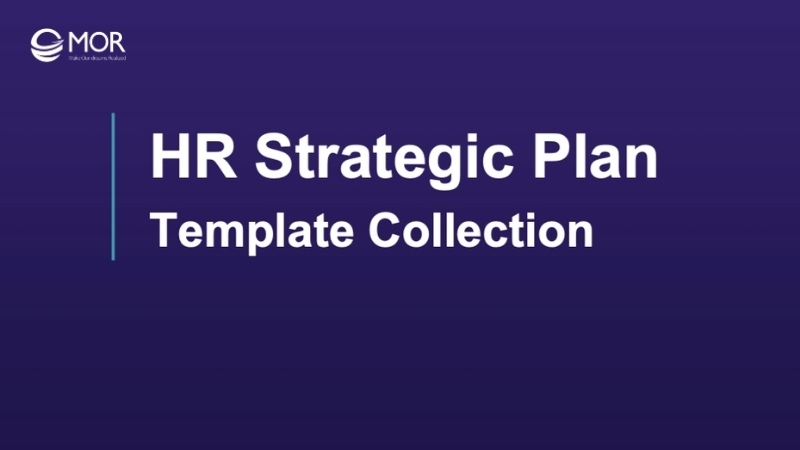

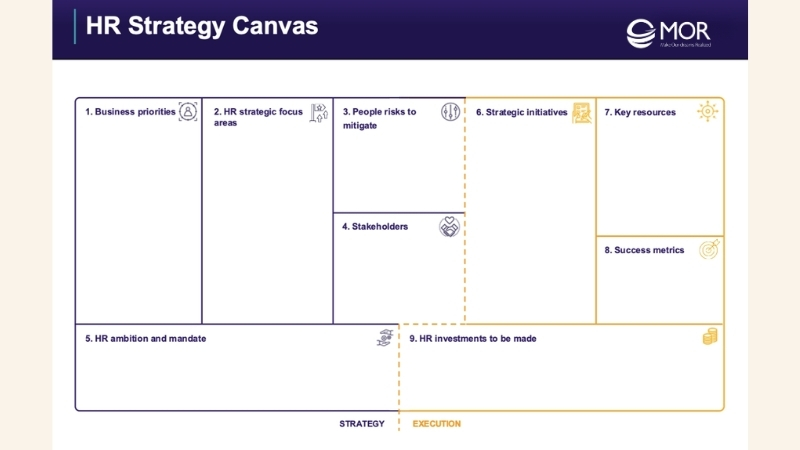
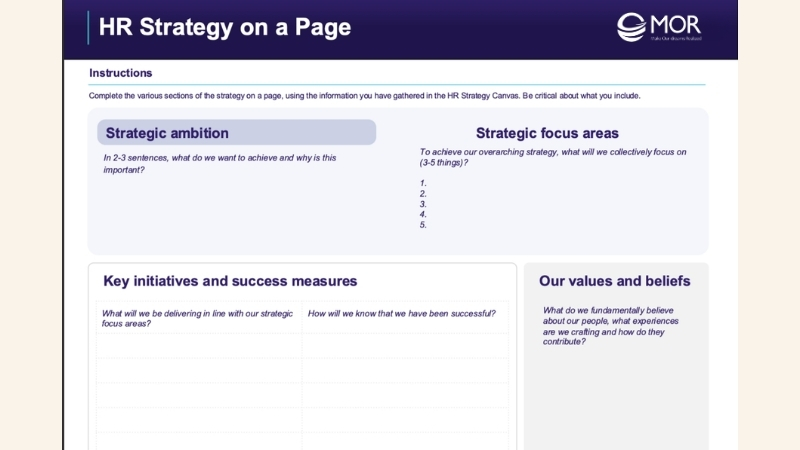
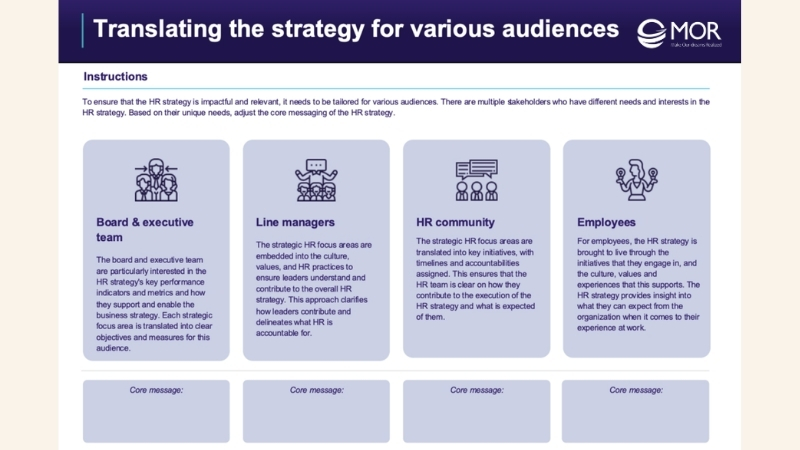
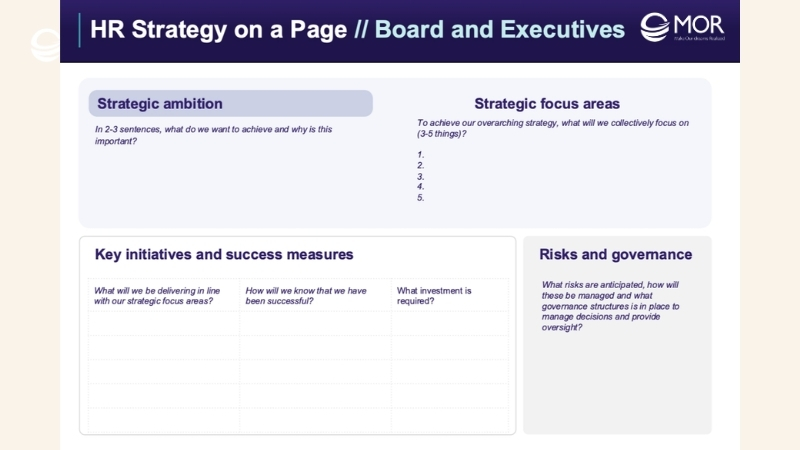
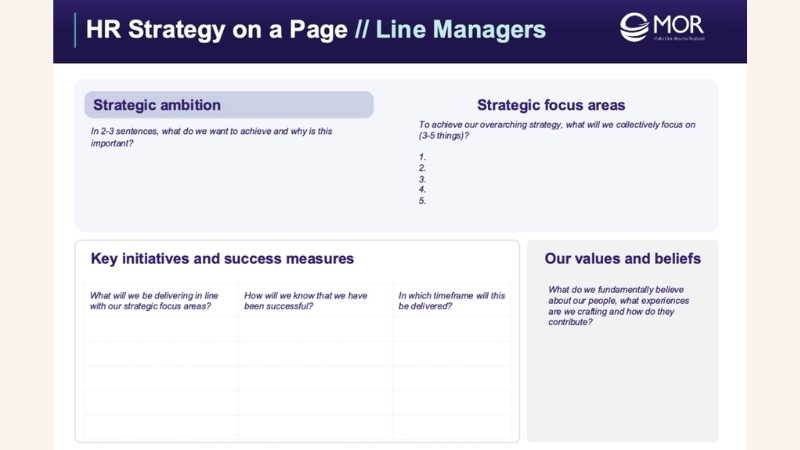
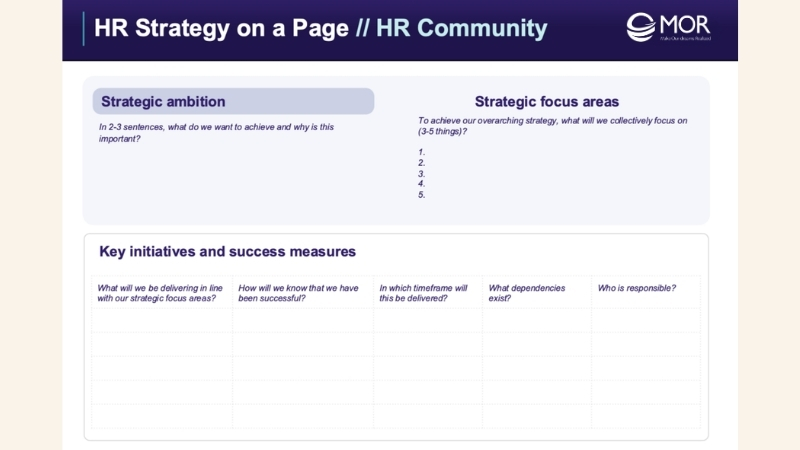
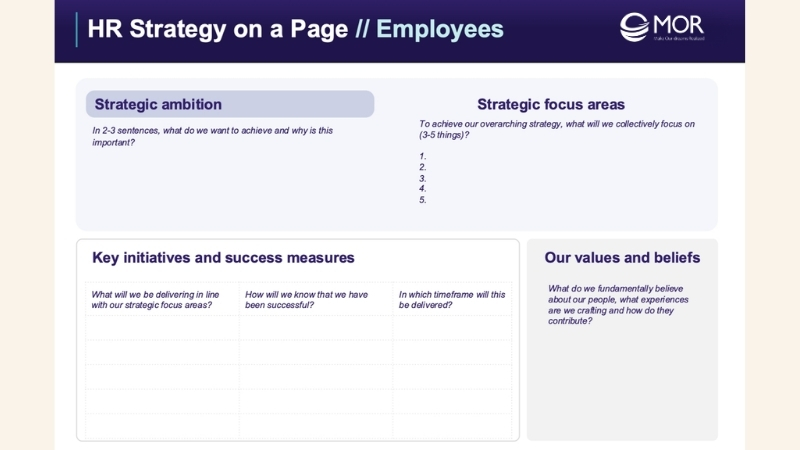
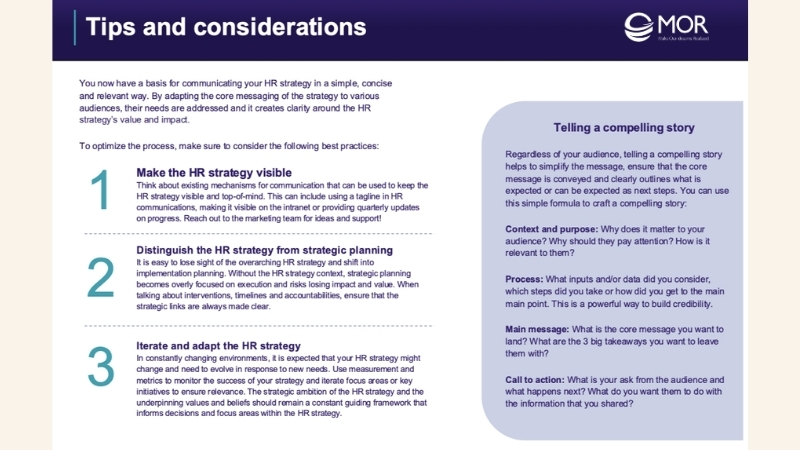
Work with MOR Software On Your Strategic HRM Plan
Building a strategic HRM plan takes more than theory. You need clear execution, the right tech stack, and hr outsourcing companies to understand how HR works at scale.
That’s where MOR Software comes in.
We’ve helped businesses across finance, healthcare, manufacturing, and tech turn complex HR strategies into functional, high-impact systems. Whether you're designing from scratch or refining what’s already in place, our team can help map out the tools, workflows, and integrations that fit your people and goals.
Let’s talk about what your HR team really needs and how we can help you deliver it. Contact MOR Software to get started.
Conclusion
A clear strategic HRM plan helps HR move from reactive to proactive. It keeps priorities focused, aligns with business direction, and turns goals into real results. This guide of MOR Software has outlined each step, plus shared a real-world strategic HRM plan example to help you get started. Need expert support to turn your HR vision into action? Contact us to explore how we can work with you.
MOR SOFTWARE
Frequently Asked Questions (FAQs)
What’s the difference between an HR strategy and a strategic HRM plan?
An HR strategy sets the long-term direction, while the strategic HRM plan turns that direction into specific actions, timelines, and responsibilities.
Who should be involved in creating a strategic HRM plan?
It usually involves HR leaders, department heads, and executives. Input from employees and frontline managers also helps make the plan more grounded.
How often should we update our strategic HRM plan?
Most companies review their plan annually. But if there’s major change, like growth, restructuring, or new tech, you might need to update sooner.
What tools or templates help build a strategic HRM plan?
You can use strategy audit checklists, HR OKRs templates, Gantt charts for planning, and visual tools like strategy-on-a-page formats.
Can a small business benefit from a strategic HRM plan?
Yes. Even a lean team needs clarity on hiring, development, and engagement. A focused plan helps small teams stay on track without overloading resources.
Rate this article
0
over 5.0 based on 0 reviews
Your rating on this news:
Name
*Email
*Write your comment
*Send your comment
1